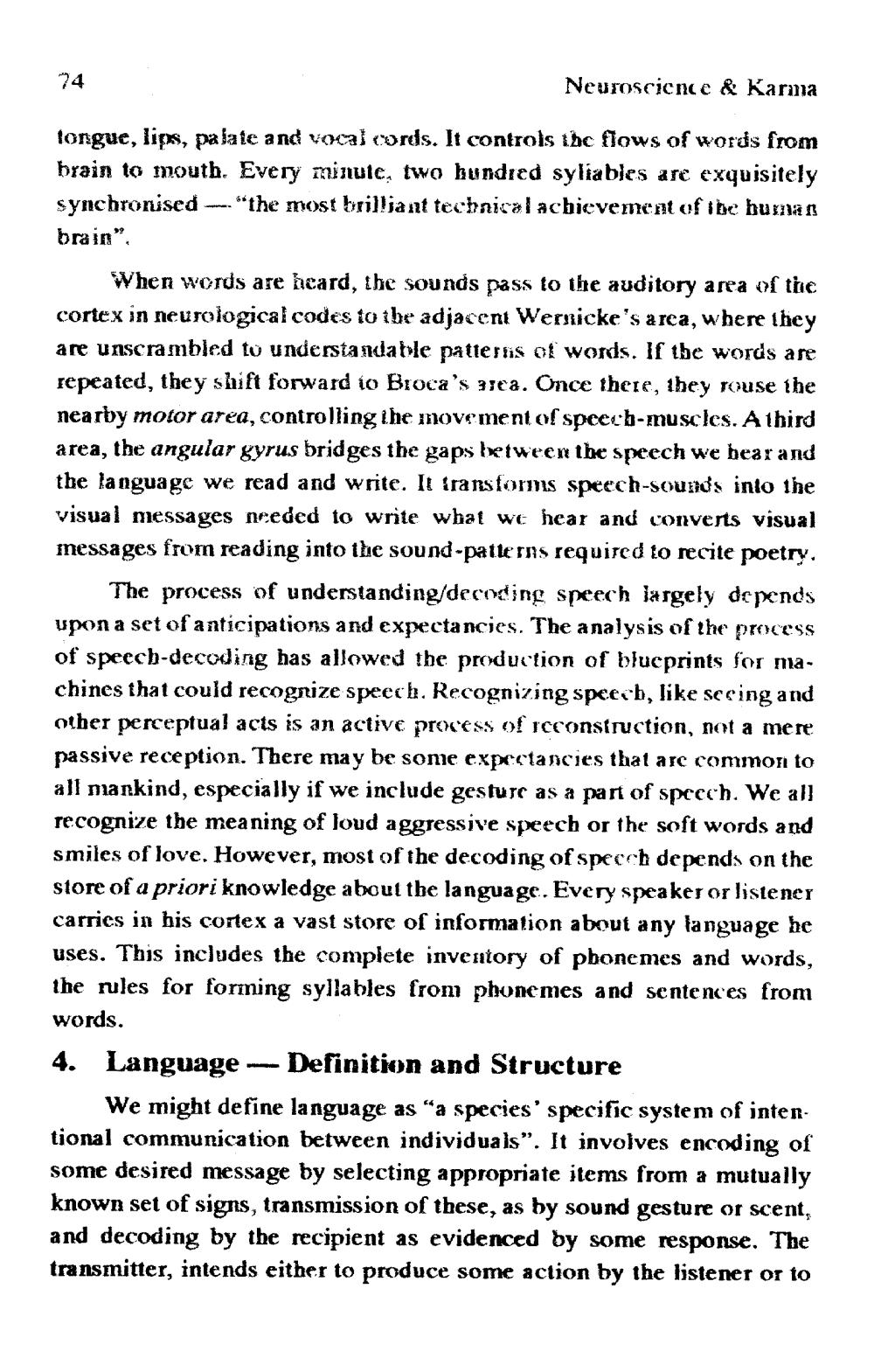________________
74
Neuroscience & Karma
tongue, lips, palate and vocal cords. It controls the flows of words from brain to mouth. Every minute, two hundred syliables are exquisitely synchronised - "the most brilljant technical achievement of ibe human brain".
When words are heard, the sounds pass to the auditory area of the cortex in neurological codes to the adjacent Wernicke's area, where they are unscrambled to understandable patients of words. If the words are repeated, they shift forward to Broca's 308. Once there, they rouse the nearby motor area, controlling the movement of speech-muscles. A third area, the angular gyrus bridges the gaps between the speech we bear and the language we read and write. It iransformis specch-sound's into the visual messages needed to write what we hear and converts visual messages from reading into the sound-patterns required to recite poetry.
The process of understanding/decoding speech largely depends upon a set of anticipations and expectancies. The analysis of the process of speech-decoding has allowed the production of blueprints for machines that could recognize speech. Recognizing speech, like seeing and other perceptual acts is an active process of reconstruction, not a mere passive reception. There may be some expectancies that are common to all mankind, especially if we include gesture as a part of speech. We all recognize the meaning of loud aggressive speech or the soft words and smiles of love. However, most of the decoding of specch depends on the store of a priori knowledge about the language. Every speaker or listener carries in his cortex a vast store of information about any language he uses. This includes the complete inventory of pbonemes and words, the rules for forming syllables from phonemes and sentences from words. 4. Language - Definition and Structure
We might define language as “a species' specific system of intertional communication between individuals”. It involves encoding of some desired message by selecting appropriate items from a mutually known set of signs, transmission of these, as by sound gesture or scent, and decoding by the recipient as evidenced by some response. The transmitter, intends either to produce some action by the listener or to




